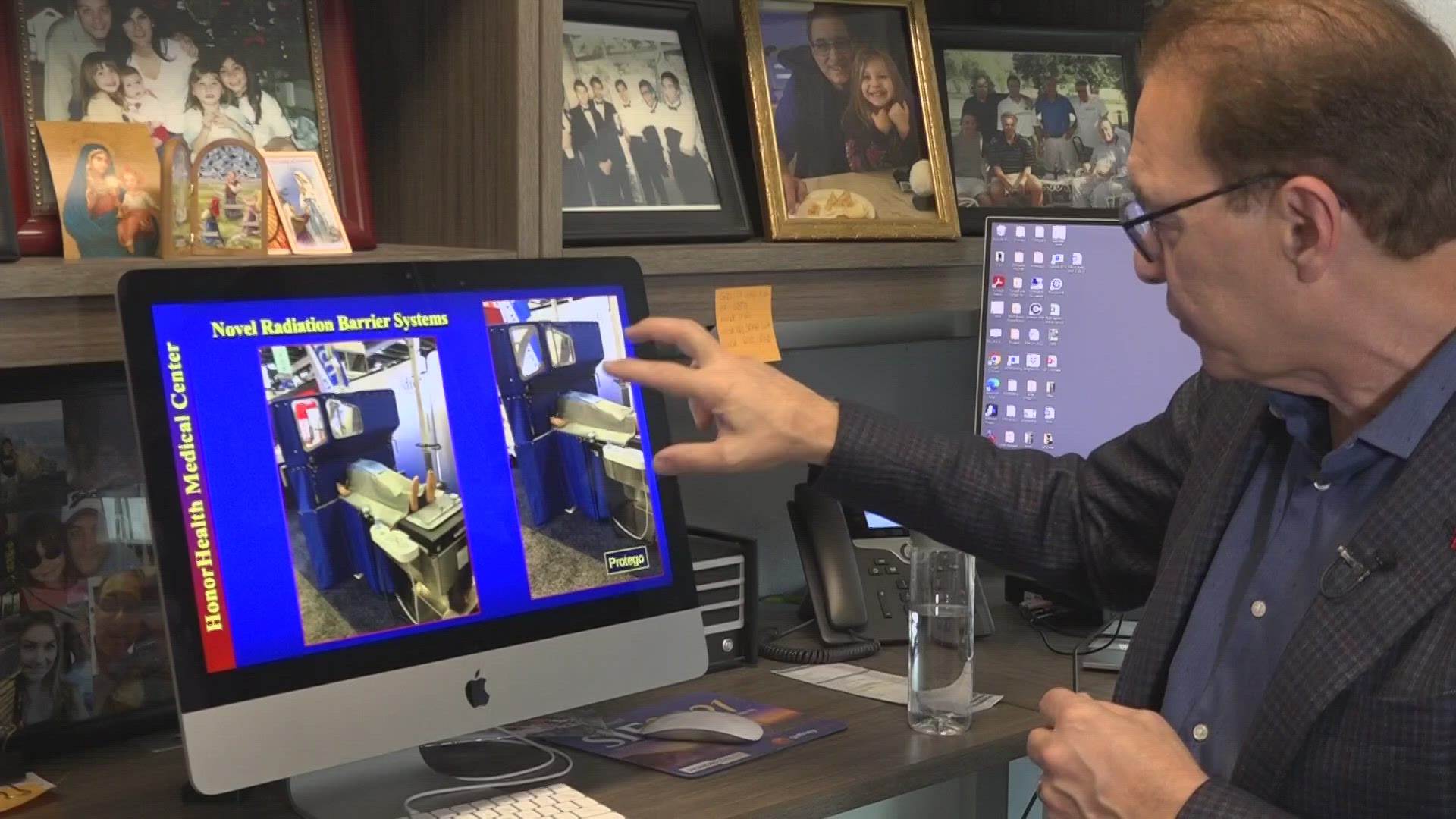ARIZONA, USA — A new study released by Arizona researchers believes there’s a better way to protect doctors, nurses and technicians as they treat people with heart disease.
While those healthcare workers help patients in a cardiac catheterization lab, they’re exposed to radiation from the X-rays used during procedures.
“We want to make sick people better. We want to improve the lives of our patients, but in doing so, we definitely expose ourselves to long-term adverse consequences,” Dr. David G. Rizik, director of the Cardiovascular Research Division at HonorHealth Research Institute, said.
Rizik has worked as an interventional cardiologist for 30 years, noting that the several hours a day, multiple days per week, over three decades, adds up in a cath lab.
“By the time you were at my stage in your career, having no protection to your face, you have been exposed to the equivalent - your face - of about 25,000 chest X-rays,” Rizik said.
The only protection for portions of the body is a led apron. It doesn’t cover the arms, head, neck and parts of the legs and back.
The apron is worn for hours, and the weight of it can bring back or orthopedic issues, which Rizik said he’d felt recently in his career.
Dr. John Neil, HonorHealth executive vice president, chief physician executive and network strategy officer also experienced back pain. He was a vascular and interventional radiologist for 20 years before joining HonorHealth’s executive team.
“Woke up every day for the last 10 or 15 years with a sore back, and my wife would watch me crawl out of bed with back pain,” Neil said. “And since I've removed myself from that environment, now I work just in a physician executive role. My back doesn't hurt anymore.”
But it’s the radiation that can compound too, given the amount doctors, nurses and technicians are working in cath labs.
“The one source is the X-ray machine, the beam itself," Rizik said. "But when the X-ray goes into the patient, the patient also becomes a source. The patient throws off what we call scatter,” Rizik said.
Rizik said that radiation could also lead to an increased risk of cataracts and cancer, noting Arizona Heart Institute founder Dr. Edward Dietrich died in 2017 from a brain tumor.
“He died very likely from the consequences of radiation exposure,” Rizik said.
In a study published Tuesday in the Journal of the Society for Cardivoascular Angiography & Interventions, Rizik and his colleagues found a shield in the cath lab, called Protego, helps protect doctors and nurses from radiation.
“In our study, in 68% of the cases, there was no radiation exposure at all. It was imperceptible to the physicians and nurses,” Rizik said.
Right now, without the shield, Rizik said doctors often exceed OSHA standards for radiation exposure and are supposed to take a break from cath labs.
“With the data that we have accumulated, if you look at the OSHA maximums, a busy cardiologist could do 400 procedures in a year and be at less than one percent of the OSHA allowable using the Protego system,” Rizik said.
Rizik believes that the reduction of radiation exposure, thanks to the protective shield, it’ll eventually allow healthcare workers to take off the led aprons in the labs and enable future generations of doctors to help people longer.
“I believe this will extend careers, I believe we will be able to recruit doctors and nurses much better to a safer work environment,” Rizik said.
When discussing the shield's protection, Rizik compares the shield in a cath lab to football helmets and pads on a football field – things that changed the game.
“I hope in five to 10 years we look back at radiation exposure, radiation injury, and orthopedic injury as a thing of the past,” Rizik said. “I hope we look back and sort of scratch our heads and say, ‘God, how primitive our thinking was.’”
Up to Speed
Catch up on the latest news and stories on the 12News YouTube channel. Subscribe today.

